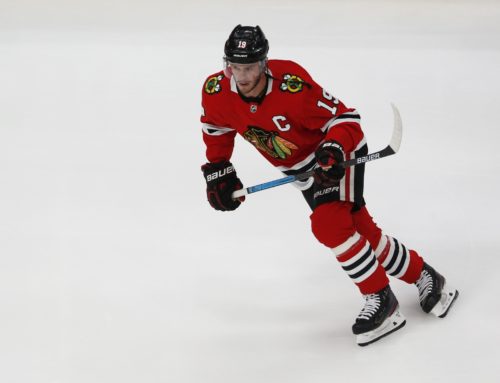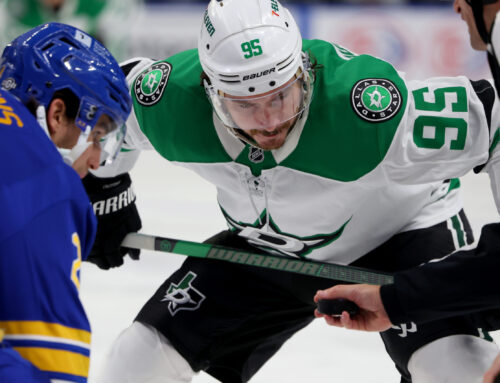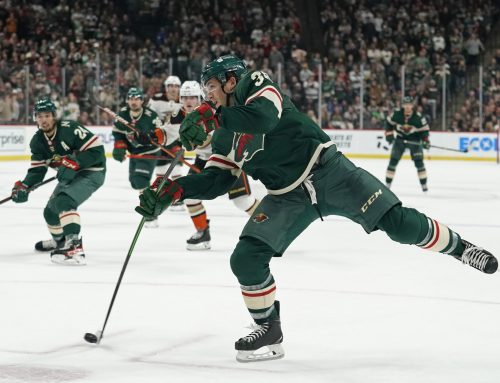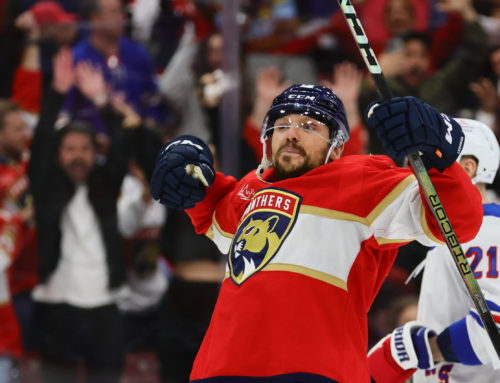If you've read my Ramblings from the previous two days, you'll recall that I've had success using the Zero G strategy in two different mock drafts (source: Apples and Ginos). However, I'm not going to proclaim that you'll have a guaranteed 100 percent success rate using this strategy.
If you do decide to use this strategy, I'd like to bring up some caveats. Keep in mind that I have not run these past the originator of the strategy. These are simply my own observations.
Know your league settings. Simply put, Zero G may not work for everyone. In his recent AMA on Reddit, Dobber was asked this very question. Just to paraphrase, if about half your league categories are goalie-based, you might not want to wait until the middle rounds to pick a goalie. But if only about three of 10 of your categories are goalie-based, then Zero G is probably safer for you.
Another consideration is league size. Zero G has worked well in 12-team mock drafts where I've picked 16 players. In my most recent mock draft, the likes of Adin Hill, Anton Khudobin, and Chris Driedger (among others) were not drafted at all. If you're in a 16-team league with 35 players, just about any goalie on an NHL roster – starter or backup – will get drafted. Combine more teams with limited supply with high concentration of goalie categories with league members antsy to grab goalies and you might not be able to wait very long. That all depends on your league behavior, which I'll describe further.
Don't wait toooooo long. In both of my mock drafts, I set a target of pick 100 to start picking goalies. If you're more risk tolerant than I am, or goalies account for very little to none of your scoring, you are probably okay waiting even longer than that. But as soon as pick 100 hit, I drafted three goalies. I drafted completely different goalies the second time around (Jack Campbell, Ilya Sorokin, Cal Petersen) than I did the first time (Jordan Binnington, Tristan Jarry, Linus Ullmark), which suggests that a wide variety of options should still be available. Besides, it's easier to find skaters with similar point projections after pick 100 than it is in the earlier rounds.
Keep an eye on the goalie situation. As you are drafting, filter your list to show which goalies are still available. Are there still plenty of goalies left, or do they seem to be flying off the board? If you're in a snake draft, use that time between picks to look at which players might be drafted soon (either by rank or ADP). In his AMA, Dobber suggested tiers, which you should also bring to the table. You won't draft Andrei Vasilevskiy or Connor Hellebuyck using a Zero G strategy. And some of the next-tier goalies will be gone by pick 100 as well (see goalie rankings with tiers here). Which brings me to…
Abandon the strategy if needed. If you're a skydiver (which I'm not), you're probably not going to jump out of the plane if it's too windy outside. Or if you're unsure whether your parachute will be reliable. Or if you just don't feel right that day. Anyone taking risks has to understand risk tolerance. To me, Zero G is taking a risk because, let's face it, drafting a goalie or two early is a play-it-safe option.
Your draft strategy should be fluid and not rigid. If you expect a draft to play out exactly as you expect, you may be disappointed. Everyone else might draft goalies early, which may leave you with limited options before pick 100 (or whatever bar you set). If an available player is clearly the best option at a certain position, and you need a player at that position, then you should strongly consider drafting that player. If you need a player at a certain position, and you don't think he'll be around by your next pick, you draft that player. Know when to scrap the plan to ensure your draft remains a success.
I know I've placed heavy emphasis on drafting during my last few days of Ramblings, so I apologize if that has already passed for you or it simply isn't relevant to you. There are a great many drafts taking place both this weekend and next, so this will be heavy on the minds of a lot of you reading this. With that in mind, I'll switch gears and discuss a few names that have been making headlines during training camp.
One of many forwards added by the Leafs to complement their big four core, Bunting has impressed in training camp. His preseason output includes a hat trick on Wednesday against Ottawa. Regression simply hasn't hit Bunting yet, as he scored 10 goals in 21 games played, giving him a sky-high 26.3 SH% overall. Although that shooting percentage will likely drop, Bunting also didn't benefit from having a center like John Tavares in Arizona.
In my 12-team league with maximum 35 players, Bunting has not been added, but he is 46 percent rostered in Fantrax leagues (just 9 percent in Yahoo leagues). I'd consider him a late-round flier in deeper leagues, where he has the potential to score 20 goals and reach 40 points. If the scoring dries up, Bunting will probably be on a short leash given the multitude of other options the Leafs have at forward. Bunting also has value in hits leagues, as he could reach 100 hits given his greasy style of play.
Of all the players selected in the 2021 draft, none might have a higher ceiling than Eklund – even at the 7th overall pick. And he's a real threat to make the Sharks out of camp. Even with a wide variety of linemates, Eklund has managed to produce points in preseason games. He's even being auditioned on the power play. Very few 18-year-olds make NHL rosters, so I'd take a wait-and-see approach in terms of making the roster, but also clearing the nine-game trial period. Of course, keeper leagues should be all over him.
Another under-the-radar prospect for the Sharks that could make the team is Jonathan Dahlen. The Canucks inexplicably traded him back in 2019, possibly because he didn't thrive in the AHL. He went back to Sweden and recorded back-to-back 70+ point seasons in roughly 50 games per season for HockeyAllsvenskan. He's had a strong camp playing alongside top-6 regulars Logan Couture and Timo Meier.
Johnson did not play for the Blackhawks on Saturday. Neither did his linemates throughout much of the preseason, who happen to be Patrick Kane and Alex DeBrincat. In addition, Johnson has been used on the first-unit power play alongside Kane, DeBrincat, and Jonathan Toews. After being buried on the Lightning, could Johnson possibly be a first liner with first-unit power play time this season?
It's possible that Tampa's trade of Johnson to Chicago to clear cap space will help Johnson turn around his career. The Hawks don't have a true first-line center at the moment, as Toews missed all of last season, Kirby Dach may be that guy someday but isn't now, and Dylan Strome isn't making the most of his opportunities. Johnson's cap hit isn't ideal, but there could be a real opportunity for him in Chicago. Keep him on your watch list in case this arrangement carries over into the regular season.
Fantasy Take: Tyler Johnson Finally Moved… To Chicago
–
I can't say I know a lot about this subject. So I'll leave this here, as Robin Lehner speaking his mind about prescription drugs could become a major story.
These two tweets might also be related, as Nolan Patrick is now Lehner’s teammate on the Golden Knights.
Oh boy…
–
For more fantasy hockey discussion, or to reach out to me, you can follow me on Twitter @Ian_Gooding





 SEA
SEA CHI
CHI OTT
OTT EDM
EDM DAL
DAL STL
STL ANA
ANA FLA
FLA CBJ
CBJ L.A
L.A T.B
T.B
